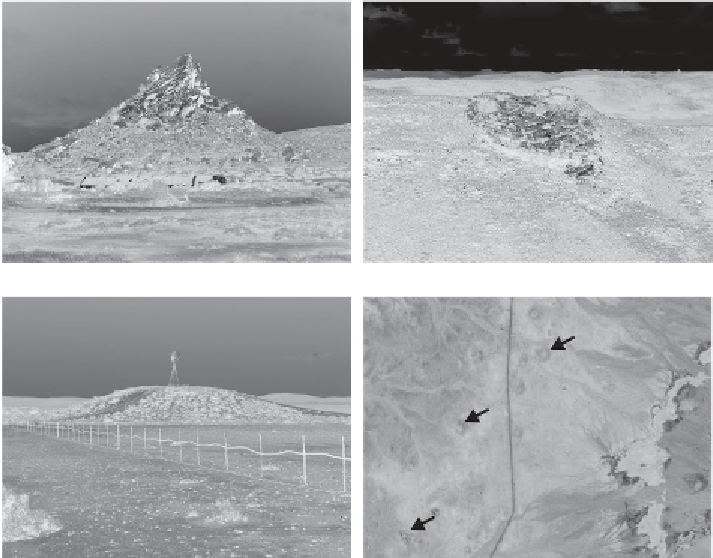Environmental Engineering Reference
In-Depth Information
(a)
(b)
(c)
(d)
Figure 12.5 Various outcrop manifestations of hydrothermal vent complexes
and breccia pipes in the Karoo Basin. (a) The Witkop I hydrothermal vent
complex, a sand-dominated crater-like deposit. (b) Unnamed hydrothermal vent
complex representing a former crater in Elliot Formation sandstone
filled with
Clarens Formation sand. (c) Breccia pipe near Loriesfontein in the western Karoo.
(d) Satellite image of breccia pipes (shown by white arrows) north of Loriesfon-
tein. More than 400 pipes are mapped in this area. Dirt road (line) for scale.
The thickest sill in the basin is about 220 m thick, most are in the 10
60 m range.
The sills were emplaced at 182.6 Ma, likely within a 400 kyr interval as
suggested by Monte Carlo simulations of sill ages (Svensen
et al
.,
2012
). The
composition of the sills is mainly tholeiitic, with a few evolved intrusions
(andesitic) (Marsh and Eales,
1984
;Neumann
et al
.,
2011
). Hundreds of breccia
pipes and hydrothermal vent complexes (HVCs) are rooted in the contact aure-
oles in the Karoo Basin (
Figure 12.4b
,
c
) and formed during pressure build-up
related to devolatilization (Jamtveit
et al
.,
2004
;Svensen
et al
.,
2007
;Aarnes
et al
.,
2012
). The HVCs commonly crop out in the uppermost 400
-
500 m of
the basin (
Figure 12.4a
). Examples of breccia pipes and HVCs on outcrop scales
are shown in
Figure 12.5
.
-

